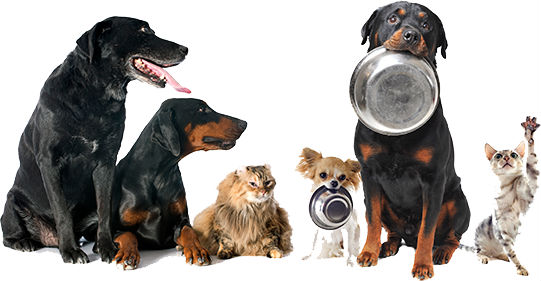Understanding Pet Food
By: Pet Nutrition Alliance | Aug 22, 2018
Pets need a diet that meets their nutritional needs. Dogs and cats need over 30 essential nutrients including protein, essential amino acids, essential fatty acids, and vitamins and minerals. The goal is to feed the pet such that when caloric needs are met, all essential nutrients are consumed (complete) in the proper amount and ratios (balanced). This is referred to as “complete and balanced nutrition.” Look for the Association of American Feed Control Officials (AAFCO) Nutritional Adequacy Statement on the pet food label to see if that food is complete and balanced for the specific pet’s life stage. This is one of the most important pieces of information on the pet food label.
Pet food is regulated at both the federal and state level. FDA regulations require proper product identification, net quantity, manufacturer or distributor name and place of business, and a listing of all ingredients in the product by descending order of weight. Many states base their regulations on the Association of American Feed Control Officials (AAFCO) Model Bill and Regulations for Pet Food and Specialty Pet Food. These regulations include label requirements for complete and balanced products such as the nutritional adequacy statement, feeding directions, guaranteed analysis, and calorie statement. More detail can be obtained on the AAFCO Talks Pet Food website.
Certain terms such as natural or human grade are defined by AAFCO while terms such as holistic or biologically appropriate are not. Some clients may ask about raw diets. The FDA, AVMA and AAHA provide owners with information regarding this feeding strategy.
Every ingredient in a pet food must be included on the label and listed in descending order by weight. Ingredients are listed by the name and definition established by AAFCO. For example, “meat” listed in the ingredient list is derived from cattle, swine, sheep or goats unless the label specifies the meat was derived from another species (e.g. venison or rabbit meal). Ingredient names such as meat by-products or poultry by-product meal have specific definitions that define what can and cannot be included in the ingredient (e.g. meat by-products can include organ meats such as liver, kidney and lung but cannot include hair, horns, teeth or hoofs).
Some clients prefer to home cook for their pets rather than feed a commercial pet food for various reasons. As with feeding a commercially prepared food, it is most important to ensure the pet is receiving a complete and balanced nutrition. Many recipes available to pet owners do not provide complete and balanced nutrition. Consult with a board certified veterinary nutritionist to ensure the patients’ needs are being adequately met.
To learn more about Pet Nutrition Alliance please visit: https://petnutritionalliance.org/


Disclaimer: healthcareforpets.com and its team of veterinarians and clinicians do not endorse any products, services, or recommended advice. All advice presented by our veterinarians, clinicians, tools, resources, etc is not meant to replace a regular physical exam and consultation with your primary veterinarian or other clinicians. We always encourage you to seek medical advice from your regular veterinarian.

